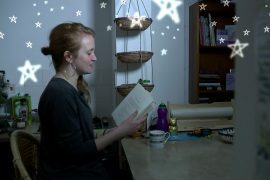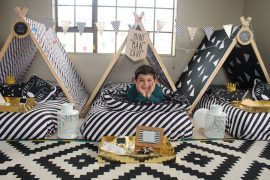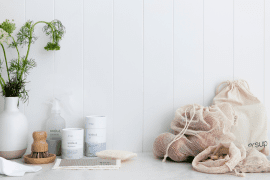At what age do we begin to implement toy rotation and how?
Babies from birth to six months old only require a small collection of up to five or six toys in total, which can just be changed to another activity as he or she progressively develops. The toys can all be kept in your baby’s nursery in one place and only the visual and tactile toys may need to be rotated for development.
From about seven months old, however, toys can begin to be placed in various areas of the home and the variety of activities will extend out from just visual, movement and tactile activities to activities in a more diverse range. These areas include music, art, refinement of the senses through wrist and hand movements and toys that allow for motor skills and executive functions to develop. While this is true, from seven months old, we do not need to bombard the child but rather gradually add in a couple of materials or activities to each learning area, to cater for his or her developing concentration spans and to get our babies used to the idea of learning and exploring activities in categorised learning areas. We can, for example, have a small basket of toys in the living room, a couple of toys in the kitchen, and then a couple of activities on parts of a shelf that we have sectioned off for the various learning areas. Unused toys can be kept in storage and gradually introduced as your baby develops.
The key principle here is to remember that we are following the child, not some fixed type of progressive development.
What to do if your baby loses interest in a toy or an activity?
Babies will lose interest in toys from time to time and therefore it is important, when this happens, to not reinforce the item onto your child but rather to quietly pack it away. We can then replace it with a different activity that caters for either the same or a different part of our child’s development until we observe our child to be tired of their new activity. Then, when we rotate and bring out the previous activity again, we will observe a renewed sense of interest as though the activity has been brought out for the first time all over again. In this way, the toys/activities can be successfully practised well through a method of back-and-forth rotation.
The key principle here is to remember that we are following the child, not some fixed type of progressive development. It is in this way that we can ensure successful development in our babies and that he or she has had enough opportunity to tackle necessary tasks found in the activities that only interest them from time to time.
In conclusion, toy rotation is a simple but effective way to keep your children engaged and interested in their playthings. By providing children with a small variety of toys at any given point of time, you are promoting their creativity, enhancing their learning, reducing clutter, encouraging sharing, and saving money. Implementing toy rotation is easy, soothing, and consistent. As with any parenting strategy, toy rotation may not work for everyone, but it is worth giving it a try.
Remember, the goal is not to have the most toys but to provide your child with a stimulating and engaging environment that fosters their growth and development. So, if you find that your child is becoming bored with their toys or overwhelmed with too many, consider implementing toy rotation to keep things fresh and exciting.
Originally published here.
Visit the Nino Mondo website and connect with them on Facebook and Instagram.










